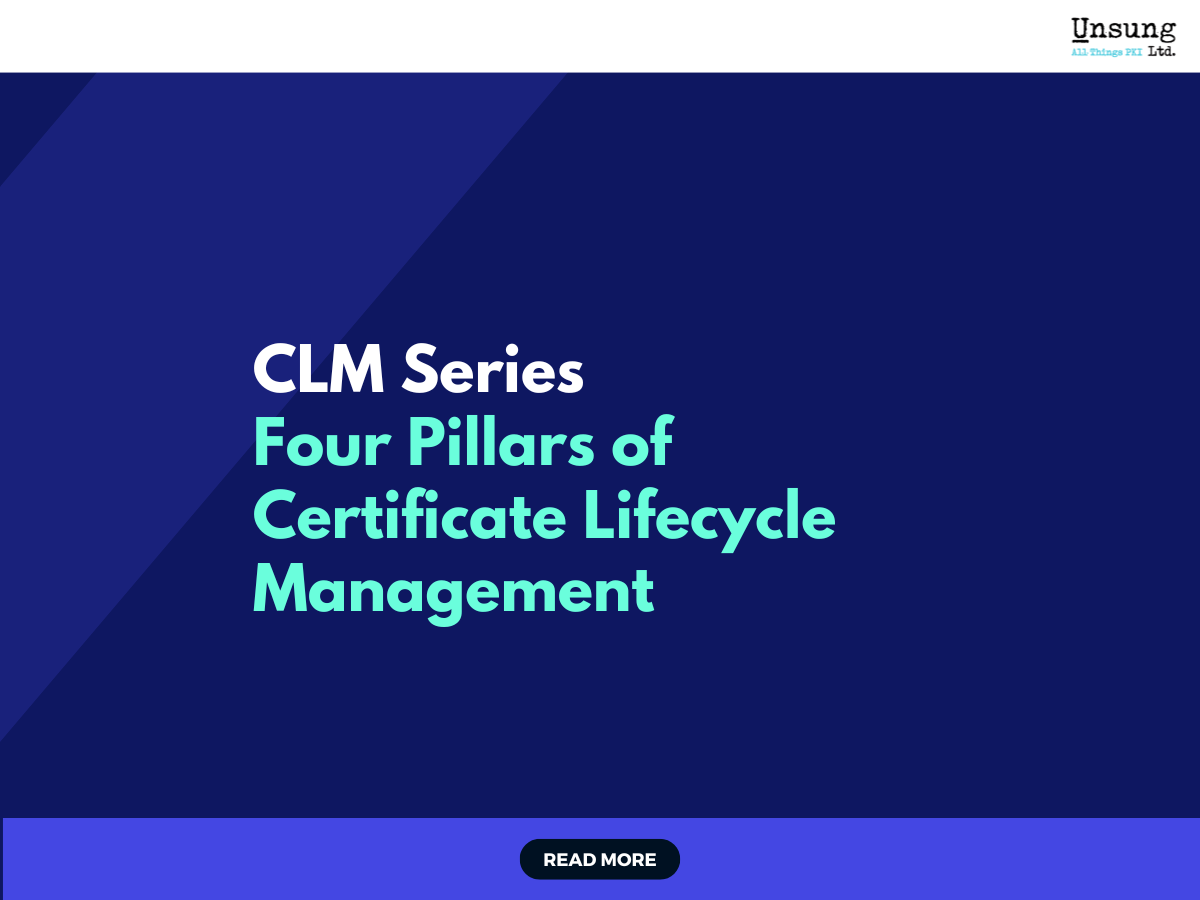Applicability, Visibility, Availability, and Automation: The Four Pillars of CLM
Introduction
Certificate Lifecycle Management (CLM) is far more than a scheduling tool for expiry dates—it is a strategic framework for ensuring that every certificate in an organisation’s environment remains secure, compliant, and functional. At its core, CLM rests on four interconnected pillars: applicability, visibility, availability, and automation. Together, these provide the structure and capability required to manage certificates effectively in complex, fast-moving IT environments.
Applicability
Applicability is about ensuring the CLM system aligns with the specific needs of the organisation. This includes:
- Supporting both on-premises and cloud-based infrastructure, as many organisations operate hybrid environments.
- Integrating with multiple Certificate Authorities (CAs) to avoid reliance on a single vendor.
- Accommodating both legacy applications and cloud-native platforms without sacrificing performance or security.
A well-designed CLM must be flexible, allowing it to adapt as the organisation’s architecture and operational priorities evolve.
Visibility
Visibility ensures that there is a complete and accurate understanding of the certificate landscape at all times. This covers:
- Knowing the total number of certificates in use.
- Mapping where certificates are deployed across servers, applications, and devices.
- Understanding their status, expiry dates, and usage in real time.
Without visibility, there is a heightened risk of missing renewal deadlines, overlooking orphaned certificates, or failing to detect misuse. A robust CLM platform offers centralised dashboards, detailed reports, and searchable inventories to keep all stakeholders informed.
Availability
Availability is about ensuring that certificates are continuously valid and operational. Achieving this requires:
- Continuous monitoring to detect potential issues before they cause disruption.
- Proactive renewal workflows that ensure certificates are replaced well before expiry.
- Rapid revocation and replacement capabilities in the event of compromise, misconfiguration, or emergency.
High availability in CLM minimises the risk of outages, helps maintain customer trust, and supports uninterrupted business operations.
Automation
Automation is essential for managing certificates at scale, especially in environments where hundreds or thousands of certificates are in use across different systems. An automated CLM system can:
- Issue new certificates on demand, integrating with DevOps pipelines and provisioning tools to support rapid deployments.
- Renew certificates automatically before expiry, removing the dependency on manual scheduling and human intervention.
- Deploy certificates seamlessly to the relevant servers, applications, and devices without downtime.
- Revoke and replace compromised certificates instantly, limiting exposure during security incidents.
Automation not only reduces the likelihood of human error but also frees up technical teams to focus on strategic initiatives rather than repetitive operational tasks. It ensures consistency, enforces policy compliance, and supports rapid response to evolving security threats.
ConclusionBy focusing on applicability, visibility, availability, and automation, organisations can establish a CLM strategy that is both resilient and efficient. These four pillars ensure that certificates remain secure, compliant, and fully operational, providing the foundation for trust in digital services and the continuity of critical business operations.



